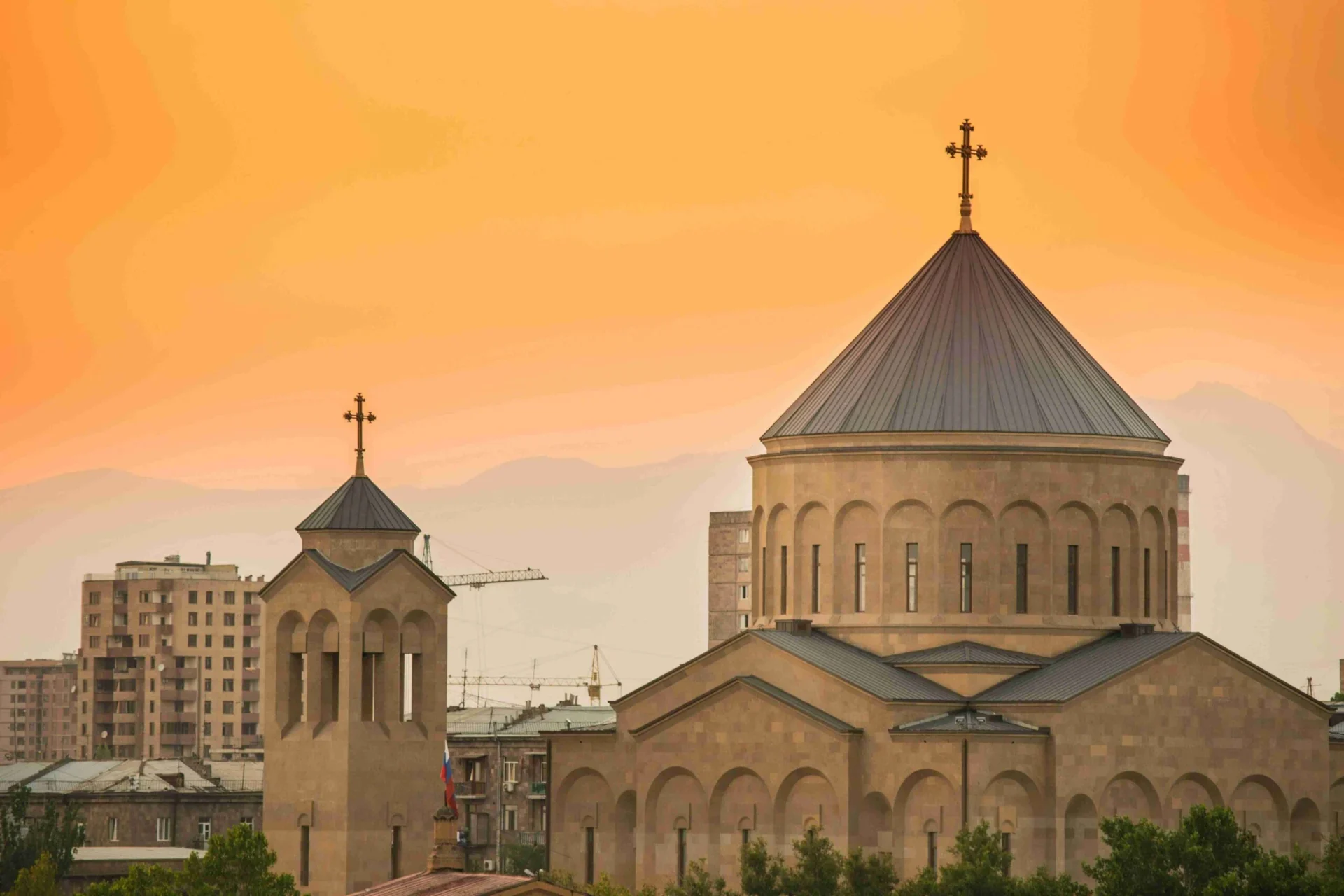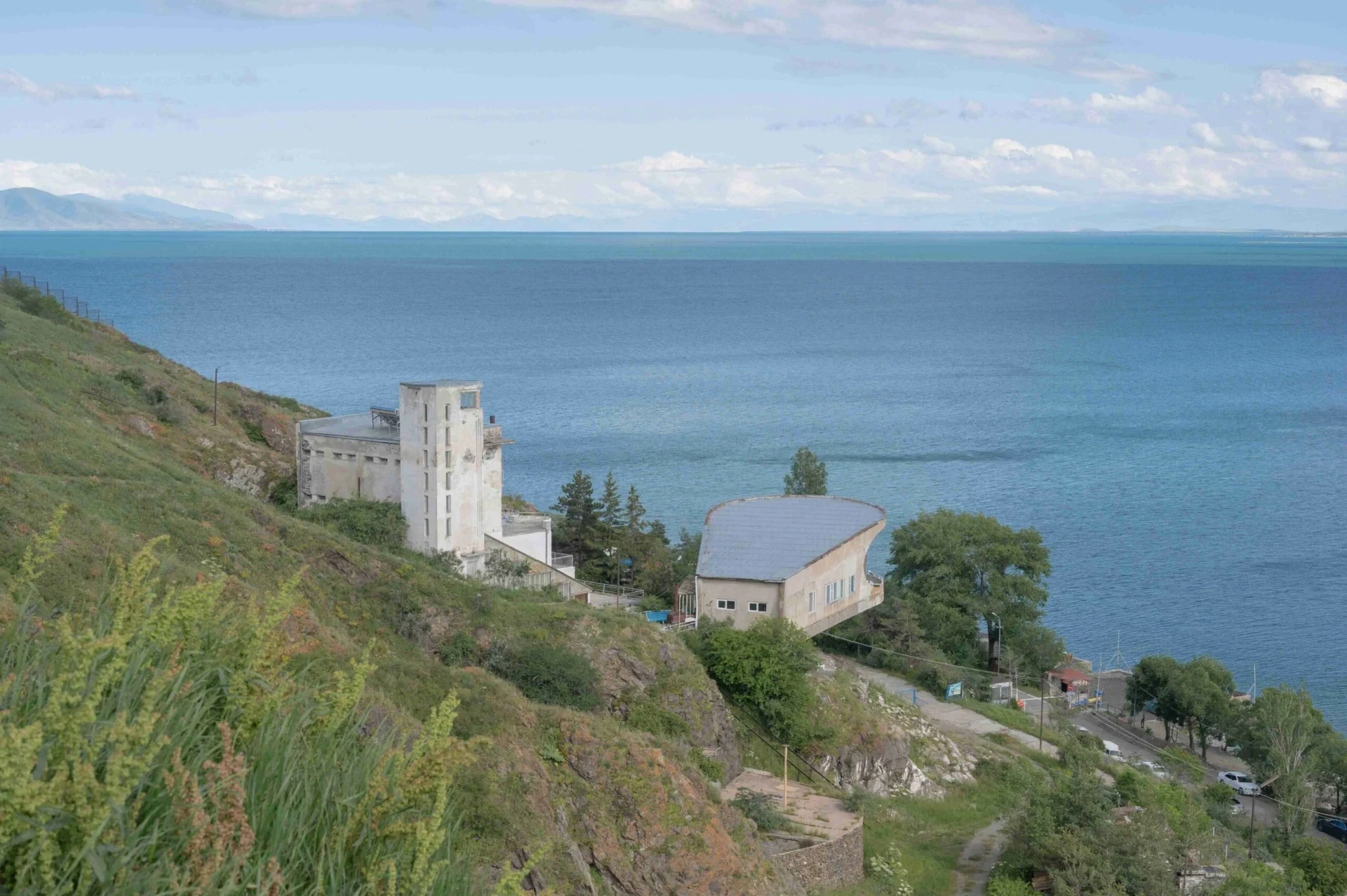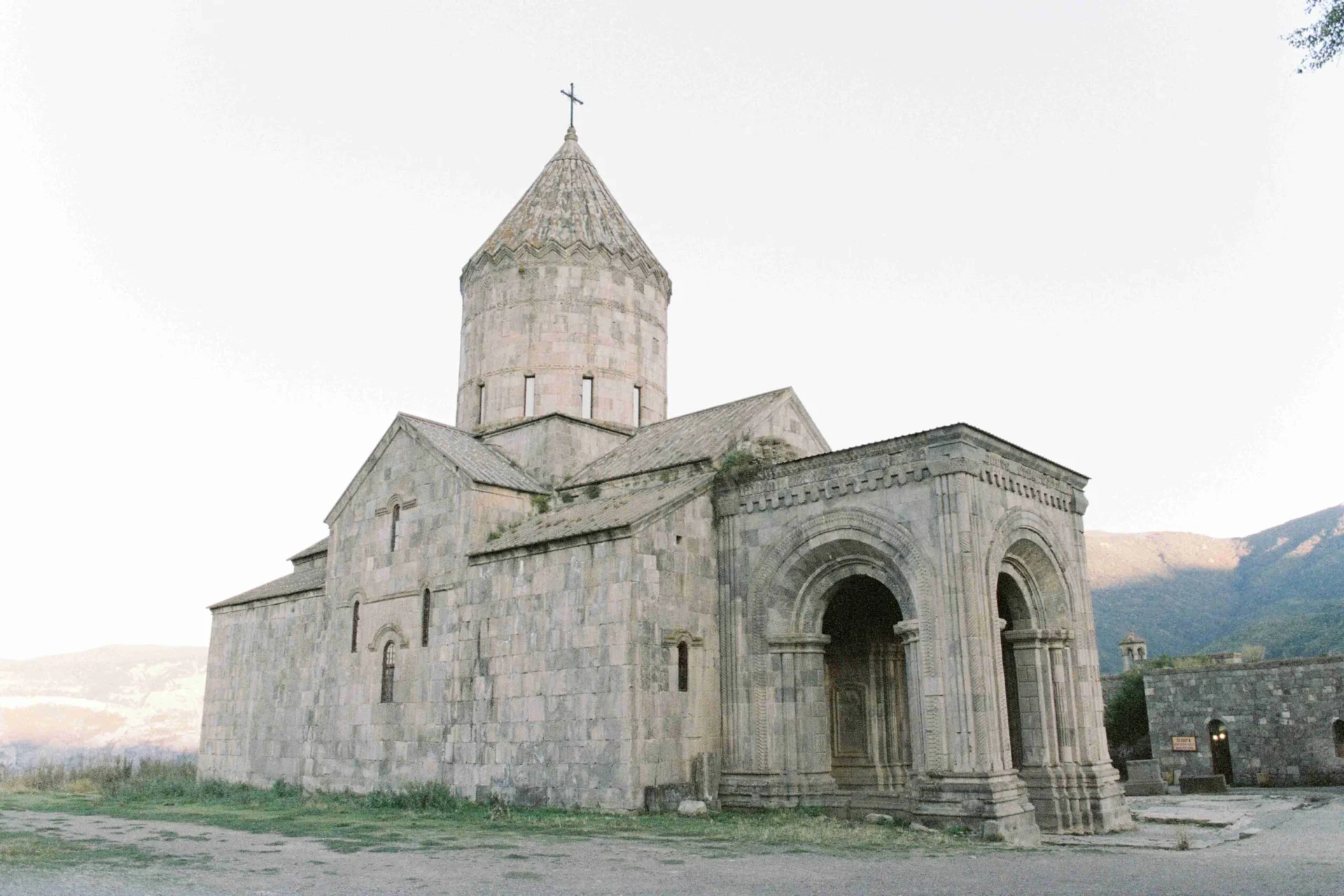There’s something for everyone in Armenia . Located in the Caucasus region, the landlocked country offers an enchanting blend of old-world history, stunning landscapes, and vibrant culture. Armenia’s history and cultural heritage are deeply rooted in Christianity, as it was the first country to adopt the religion more than 1,700 years ago. Being the first Christian nation has led tourists and explorers, especially those interested in religious history and ancient civilizations, to discover Armenia and its many wonders.
Whether planning to see Khor Virap and Noravank monastery within a day, spending 8 days in Armenia to explore both southern and northern regions, or choosing to take the off-beat-path of Mount Ararat, a trip to the Caucasus gem should be on your radar this 2024.
Here’s a comprehensive self-drive itinerary guide to help you plan the perfect Armenian road trip to make the most of your days in the Land of Noah.
Day 1: Yerevan to Garni to Geghard
24.4 miles, 1 hour and 15 minutes

Source: Photo by Nasser Ansari
Armenia has a troubled history, and what better way to learn more about its complex past than visiting the capital city of Yerevan ? Start your exploration at Republic Square to enjoy the eye-catching architecture that combines elements of neoclassical and Soviet monumentalism. Considered the beating heart of Yerevan, Republic Square also houses the National History Museum and the National Gallery, which contains a striking world-class collection of Bronze Age artifacts, ancient wooden wheeled wagons, Urartian armor and weapons, and many more old-world relics.
Then, it takes about 10 minutes to get to the Tsitsernakaberd Armenian Genocide Memorial Complex. There, you’ll find the looming 44-meter-tall memorial and the Armenian Genocide Museum, which uses photographs, documents, and reports to educate visitors on the dark days of Armenian history. On April 24th, Genocide Remembrance Day, the site hosts an annual ceremony and special exhibitions, events, and public gatherings.
The drive from Yerevan to Garni takes approximately 40 minutes. Head to the Garni temple, a must-visit ancient pagan temple dedicated to the sun god, Mihr. Don’t miss out on catching the nearby picturesque landscapes and unique rock formations of the Garni Gorge, better known as the Symphony of Stones.
Afterward, you’re bound for Geghard, a 20-minute drive from Garni. Nestled in the towering cliffs of the Azazat Gorge, the Geghard Monastery is a popular historical site for its ancient churches and tombs, mostly carved out of a massive tuff, earning its rightful spot as a UNESCO World Heritage site. While you’re in the area, sample a traditional Armenian sweet bread called Gata. This local staple has a unique twist in the villages of Garni and Geghard, which is famous throughout the country.
Day 2: Geghard to Lake Sevan
47 miles, roughly 2 hours

Source: Photo by Vera
After a day of exploring history, the Sevan Peninsula beckons with its natural beauty. This popular summer destination offers sunbathing, a connection with nature, and delightful cuisine. Located on a hill in the northwest part of Lake Sevan, Sevanavank Monastery is a key example of medieval Armenian architecture. You can visit the two remaining churches, Surb Arakelots and Surb Astvatsatsin, which are the last remnants of the grand monastery complex.
If you have spare time, you can go to another monastery, Hayravank Monastery, which is about a 30-minute drive from Sevanavank Monastery. Then, drive past Hayravank for roughly an hour to reach the Noratus Cemetery, a seven-hectare cemetery renowned for the largest collection of khachkar stones in the world. You can return to the lake proper to stay in the Sevan’s Writer House for the night, a once-writer’s retreat house turned hotel, before traversing to Dilijan the next day.
Day 3: Lake Sevan to Dilijan to Areni
135.7 miles, 3 hours and 45 minutes

Source: Photo by Ash Haghighi
From Sevan, drive to the town of Dilijan, dubbed the Switzerland of Armenia for its natural wonders, historical structures, and cultural attractions. Make your way to Dilijan National Park, a haven for those seeking the wilderness. The national park is home to numerous hiking trails through lush forests, picturesque landscapes, and several species of birds and mammals. When you are done, you can begin exploring more of the city’s historical streets and local markets to bargain for a souvenir or two. If you’re looking for a great place to eat, we recommend the Kchuch Restaurant for authentic Armenian cuisine.
Areni, about three hours away, is famous for its wine production, making it a must-visit for wine lovers. Visit the Areni-1 Cave Complex, home to the world’s oldest leather shoe and ancient relics. Try your hand at pottery at Arhestanots Studio before exploring the village’s wineries. While the Areni Wine Factory is the most popular, smaller winemakers like Momik Wines and Old Bridge Winery offer a more intimate experience of the village’s renowned winemaking.
Day 4: Areni to Goris to Tatev Monastery
102.9 miles, roughly 3 hours

Source: Photo by Vladimir Konoplev
For your last day in Armenia, immerse yourself in charming Goris, where traditional stone houses and narrow alleys offer a glimpse into the town’s historic past. Visit the Goris Historical Museum to uncover the region’s rich heritage through its enlightening exhibits. A short drive away, the Khndzoresk Caves should get your blood flowing with their ancient cave dwellings and the iconic swinging bridge.
Drive an hour from Goris to Tatev. Take in the scenic highlands on the world’s longest reversible aerial tramway, offering panoramic views as you glide between the town and the Tatev Monastery . Next, visit the UNESCO World Heritage site-listed monastery, a stunning medieval historical gem perched dramatically over the Vorotan Gorge. Afterward, enjoy local Armenian cuisine in nearby eateries, soaking in the serene atmosphere of this beautiful region.
Driving in Armenia
Want to drive like a local when you’re driving in Armenia ? Here are some tips and tricks.
- Rent a car. Winding down Armenian roads is a fantastic way to navigate around the country. If you already don’t own a car, renting one lets you experience a road trip like no other.
- Drive on the right. Armenia, just like its most European neighbors, drives on the right side of the road.
- Children under 12 are prohibited from sitting in front. Kids must sit in the back and not in the front passenger seat if their ages are below 12.
- Obtain an IDP. Getting a Foreign Driving Permit can help you drive across Armenia without a hitch.
- Remember the speed limit. In residential areas, the speed limit is 20 km/h and goes up to 60 km/h in urban areas. Outside the city limits, you may drive up to 90 km/h, and on highways, the maximum speed is 110 km/h.
- Drunk driving is prohibited. Armenia may be one of the oldest wine-producing regions in the world, but never risk being caught by a police officer with booze in your hand.
- Don’t use your phone while driving. Avoid using your phone behind the wheel unless your vehicle has a hands-free system.
- Road conditions vary per area. Armenia has a good road infrastructure, especially on main routes connecting major cities. However, in rural regions, you might come across some roads in Armenia that are still underdeveloped due to rugged terrain and unpredictable weather impacts.
- Red lines mean parking. Red markings on the side of the roads and pavements indicate a designated parking area.
Saving Money in Armenia
Get some pointers whenever you’re feeling like making every penny count on your road trip to Armenia.
- Expect cost differences between towns and cities. Staying in Yerevan and popular tourist spots like Tsaghkadzor can be pricier for tourists on a budget. If you’re looking for a Yerevan alternative but still want to be close to the action, consider staying at Gyumri or Dilijan.
- Skip fancy restaurants. In recent years, restaurant prices in Armenia have gone at par with those in other European countries. Aiming to cut expenses? Local eateries and street vendors are your best options.
- Plan your activities. When you want to save money in Armenia, take advantage of free and low-cost attractions like parks, hiking trails, and night markets.
- Travel off-season. Plan your road trip during the low season when lodging is cheaper, and there are fewer crowds.
- Get insider tips. No one knows Armenia like the locals do. If you’re looking for hidden gems, talk to some locals or ask travel forums.
Frequently Asked Questions (FAQ)
Do I need a Visa to visit Armenia?
As of February 2024, only 45 countries whose citizens are allowed to enter and stay in Armenia for up to 180 days yearly. Visit the Ministry of Foreign Affairs of the Republic of Armenia’s official website for more information.
When is the best time to visit Armenia?
The best time to visit Armenia is from late spring to early autumn when the weather is most pleasant for driving and exploring.
What are the Armenia essentials when going on a road trip?
For a road trip to Armenia, bring essential documents, vehicle tools, personal items, snacks, and a first aid kit. If you’re going during winter, remember appropriate layered clothing and snow gear.
Where can I find ATMs in Armenia?
You can find an ATM almost anywhere in Armenia. Most ATMs, such as Ardshinbank, VTB, Armeconombank, ACBA, and Unibank, don’t charge a withdrawal fee.
Is tap water potable in Armenia?
In larger urban cities like Yerevan, tap water should be safe. However, it’s best to stick to bottled water when you’re in rural areas.
The Best Time for an Armenian Road Trip Is Now
Brimming with fascinating UNESCO World Heritage sites, ancient monasteries, and highland vistas, there are many places to visit in Armenia that all sorts of people can enjoy. Armenia is a landlocked country with well-developed road infrastructure, so a road trip is highly recommended to discover more of this Caucasus gem and beyond. Navigate the narrow, long roads of Armenia with an overseas driving document —quick, easy, and accepted in over 150 countries.






